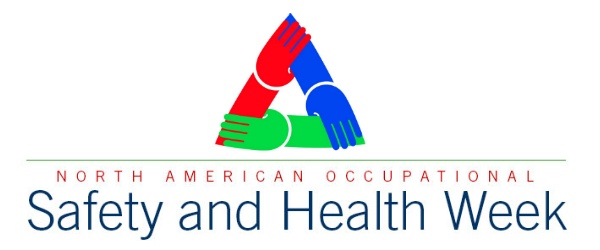SafeStart is a proud supporter of NAOSH Week. NAOSH Week takes place the first full week of May to raise awareness of the importance of occupational safety and health practices for workers around the world. The goal of NAOSH Week is to inspire everyone (employers, employees, the public and partners in safety) to prevent injuries and illnesses in the workplace, at home and in the community. Knowing exactly what to do in any given situation could be the difference between life and death.
One of SafeStart’s main critical error reduction techniques is to work on habits. Habit experts like Charles Duhigg have regularly noted the power of certain habits (keystone habits) because they influence our behavior and allow routine behaviors to be performed without needing to make small decisions every step of the way.
Many habits have already been formed from compliance practices. A pre-startup inspection is something that workers need to get in the habit of doing before beginning work in order for the process to be effective. Once they’ve been doing these inspections for a while, they don’t even think twice about doing them. The same is true for when PPE is required in certain areas, employees develop the habit of putting on their PPE before they start work in that area. This is not something they would need to think about after they’ve done it enough times meaning their habit strength is high. To learn more about how a person’s state of mind greatly influences PPE compliance and human factors, check out our free PPE Guide.
Working on a habit as a group could be a great NAOSH activity. Rewarding good behavior helps encourage reluctant participants to get involved. A great habit to work on together in the workplace is to have all employees back into their parking spaces. Backing into a parking space naturally triggers thoughts of why it’s necessary—because it’s safer—and anything that gets employees to think about safe behavior is a good thing. Especially when it happens right when they arrive at work. Once you have that mastered, pick another habit to collectively work on to make people safer and get them thinking about safety.
If you opt to have employees work on habits on their own, have them document the habit they’re working on, the struggles they’re facing with it, how practicing this safety-related habit has helped them prevent an injury, etc. Improving a habit isn’t something that happens overnight. So over the next weeks or months, make sure they practice it until they’re habitually doing it 75% of the time. Each habit that’s mastered will compensate for complacency.
Coincidentally, Emergency Preparedness Week (EP Week) is also observed the first full week of May. EP Week is a Canada-wide initiative coordinated by Public Safety Canada to increase awareness of individual and family emergency preparedness. It is a national awareness initiative that has taken place annually since 1996.
It’s important for employees to be trained on the types of emergencies that could happen at your facility. Drills are the hands-on portion of the training and they allow employees the opportunity to ask questions on anything that arises when they’re performing the drill. The drills need to happen often enough so that their emergency response skills become habits. When there is an emergency, people don’t have time to think about their actions so they often rely on their habits to get them through.
Knowing the risks, having a plan and ensuring an emergency kit is available are three surefire ways to maintain safety 24/7 both at work and at home. Because emergency workers go where they’re needed most in the community, they may not be able to get to you immediately in the event of an emergency. You should be prepared (with a properly stocked emergency kit) to be self-sufficient for 72 hours.
Whether you are part of a NAOSH Week planning committee or tackling it on your own, there are several ways to facilitate an effective (and low-cost) week of activities. Be sure to incorporate working on habits as a group, that way all participants are held accountable and you’re one step closer to making safety a habit. If you want more activities to make this year’s NAOSH Week memorable, why not include tips on how to create an emergency preparedness kit in recognition of EP Week? The most important part of NAOSH is promoting safety at work and at home, so try to have some fun with it.

